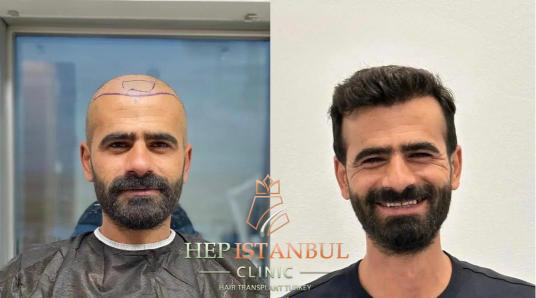Types of hair transplant operations
There are several types of hair transplants that can help restore natural hair and improve the appearance of the scalp. The optimal technique depends on the individual patient’s condition and preferences. Here is a comprehensive look at the different types of hair transplant procedures:
1. FUE (Follicular Unit Extraction) Technique
the description:
- Hair follicles are extracted one by one from the donor area (usually from the back of the head).
- The extracted follicles are implanted in the recipient area.
Advantages:
- Small, almost invisible scars.
- Relatively quick recovery period.
- It can be used to transplant hair in multiple areas, such as eyebrows and beard.
Defects:
- The extraction and transplantation process may be slow if the recipient area is large.
- It requires high skill and precision from the surgeon.
2. FUT (Tape Cultivation)
the description:
- A strip of skin containing hair follicles is removed from the donor area.
- The strip is divided into individual units containing hair follicles, and then transplanted into the recipient area.
Advantages:
- A large number of follicles can be extracted in a short time.
- It may be suitable for patients who need to transplant a large number of follicles.
Defects:
- It leaves a linear scar in the donor area.
- The recovery period may be longer compared to FUE.
3. DHI (Direct Implantation) Technology
the description:
The Choi Implanter Pen is used to implant the follicles directly into the scalp without the need to create prior openings.
- The follicles are extracted and transplanted using the same tool.
Advantages:
- Higher accuracy in planting follicles.
- Faster recovery period and reduced bleeding.
- More natural distribution of hair.
Defects:
This technique requires high skill and experience from the surgeon.
- The cost of the operation may be higher.
4. Robotic Hair Transplantation Technology
the description:
- Robotic devices such as the ARTAS system are used to extract and transplant hair follicles.
The system is based on FUE technology but uses a robot to improve accuracy and speed.
Advantages:
- High accuracy and excellent quality follicle extraction.
- Reduce human error and increase process efficiency.
Defects:
- The cost may be higher due to the use of advanced technology.
The success of the operation depends largely on the medical team’s experience in operating the device.
5. Artificial Hair Implantation Technique
the description:
- Synthetic hair fibers are implanted in the scalp.
- This technique is used for patients who do not have a sufficient donor area.
Advantages:
- Immediate results, as the artificial hair is implanted directly.
- Suitable for people who suffer from a severe deficiency of hair follicles.
Defects:
- Synthetic fibers can cause irritation or infection.
- May require periodic maintenance sessions to replace damaged fibers.
6. Light Hair Transplantation Technique
the description:
- A technique similar to FUE, but lighter and precise tools are used to extract and transplant the follicles.
- A smaller number of follicles are implanted in each session, which makes it suitable for small areas or for cases that require simple adjustments.
Advantages:
- Noticeably less scars.
- Very fast recovery period.
Defects:
- It may require several sessions to achieve the desired intensity.
- It is not suitable for cases that require transplanting a large amount of hair at once.
Conclusion
Each type of hair transplant has its advantages and disadvantages, and choosing the optimal technique depends on factors such as the condition of hair loss, the patient’s expectations, costs, and the surgeon’s recommendations. It is important to consult a medical professional to determine the most appropriate option for your individual condition and to achieve the best possible results.

